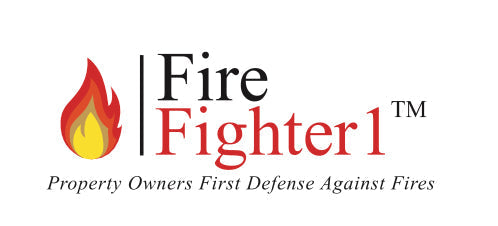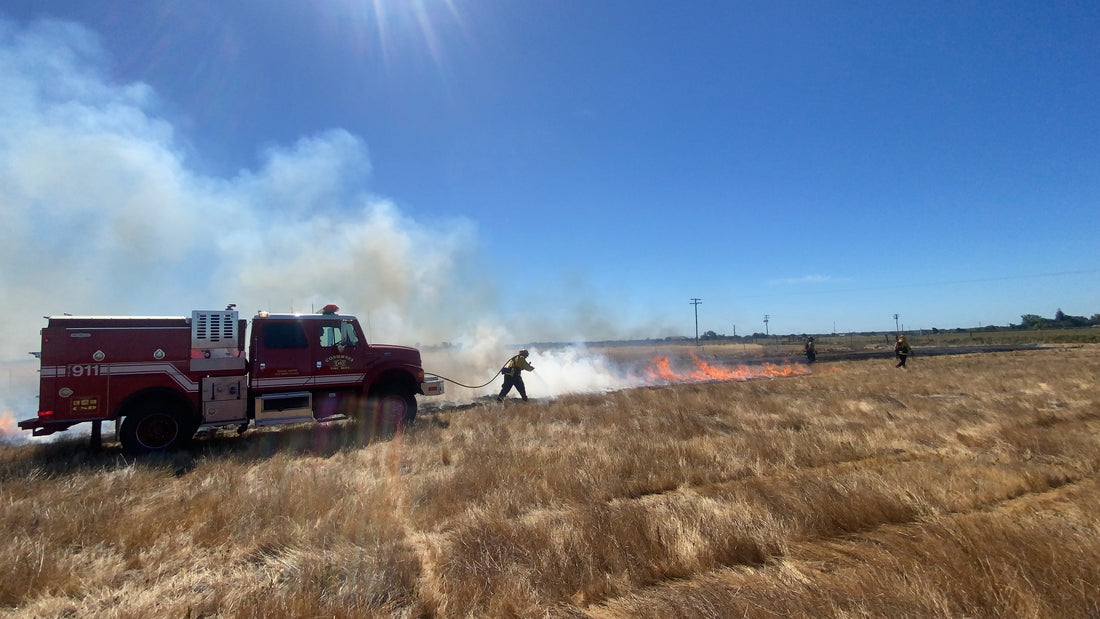As homeowners, we think about the mortgage payment, insurance, monthly utilities, but sometimes neglect to factor the importance of proper maintenance and preparation involved with protecting property. We have a fantasy of perfect situations and fail to take the risks of natural disasters more seriously. As time progresses, we are faced with the recurring reality that people live with nature, in many moderate or high fire risk areas.

I was fortunate to be invited to join Cosumnes Fire Department Training Chief Freeman during some fire drills, refreshing firefighters, and introducing new recruits, on what to be ready for during the hot summer months. My role at Franklin Field, in Franklin, CA that day was to understand how fire professionals react to fire and how they want homeowners or property owners to react when fire risk is imminent. Understanding nature will take its course is invaluable to protecting the infrastructure we create within the California landscapes.
Our fire professionals have established methods to protect properties within and along the wild-land interface. Professionals are suited with gear, trained regularly and prepared to handle a multitude of situations. When it comes to properties at risk, they follow a “Prep & Stay” rule or “Prep and Go”, depending on the calculated risk factors and overall situation.

Although fire professionals will work tirelessly to protect, firefighters number-one priority is getting property owners to reduce the risk of fire overall by participating in pre-emptive measures. Some measures we discussed, they would like property owners to help practice are;
- Creating 2 zones of defensible space, 30’ and 100’. It is the law Assembly Bill 3074. ReadyForWildFire.Org/DefensibleSpace
- Having a plan for wildfire & home fire. ReadyForWildFire.Org/Checklist
- Removing all dead or dry debris from property grounds and keeping the plants green so they are too damp to burn.
These steps provide the first main sources to reduce fire risk and make it easier for fire professionals to keep up with the demand of protection the population expects. After these first steps, there are second sources of protection from fire risk. Resources we have become familiar with today, that are “normal” precautions, are fire extinguishers’ in the kitchen and garage, whole house sprinkler systems, walled fire hoses and the fire department of course.
Now the third measure, what about the pool water? Fire departments have special trucks with pumps that can drop directly into a pool and extract water. If the homeowner had the ability, even for the fire department to use pool water quickly, it would be a great option for people wanting to participate in having a well-rounded fire safety plan. People who are wanting to protect what they work hard for, take every step necessary because the compilation of efforts reduces risk overall. A property owner who maintains 100’ of defensible space clearance, is more likely to keep current fire extinguishers on their property and more likely to have an escape plan, with items necessary ready to go. A property owner with a plan, is less likely to panic in a sometimes terrifying situation, because they have thought through the steps they need to be taking.
“Don’t underestimate the importance of expecting fires’ and be prepared for nature” would be the number taken away from the ride along with the Cosumnes County Fire Department, in addition to “knowing when to leave & trust fire professionals.” Every action we take has a domino effect. As property owners, the few steps we can take, make a huge difference in the overall protection of our infrastructure. Participate in a fire safe plan and get in contact with your local fire authorities about local best practices.

Special Thank You to the Cosumnes Fire Department & Training Chief Freeman

